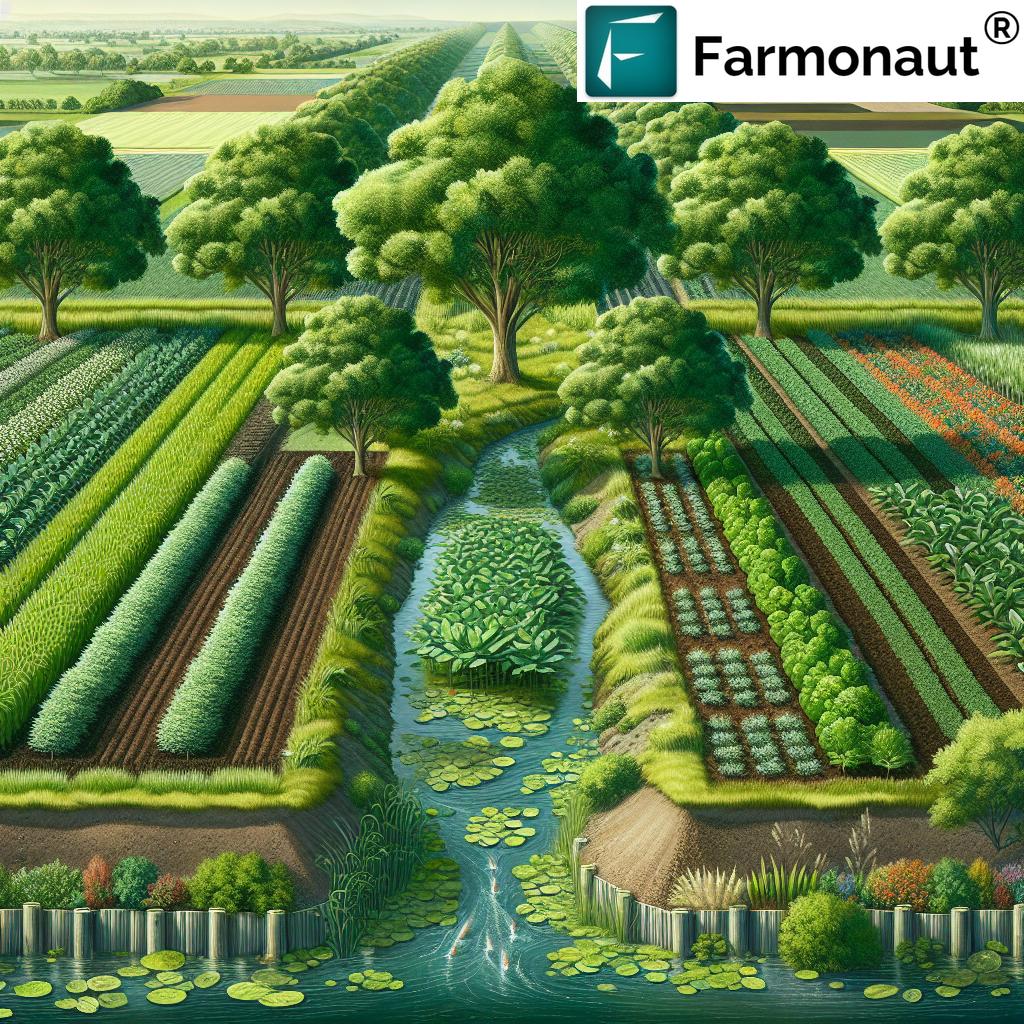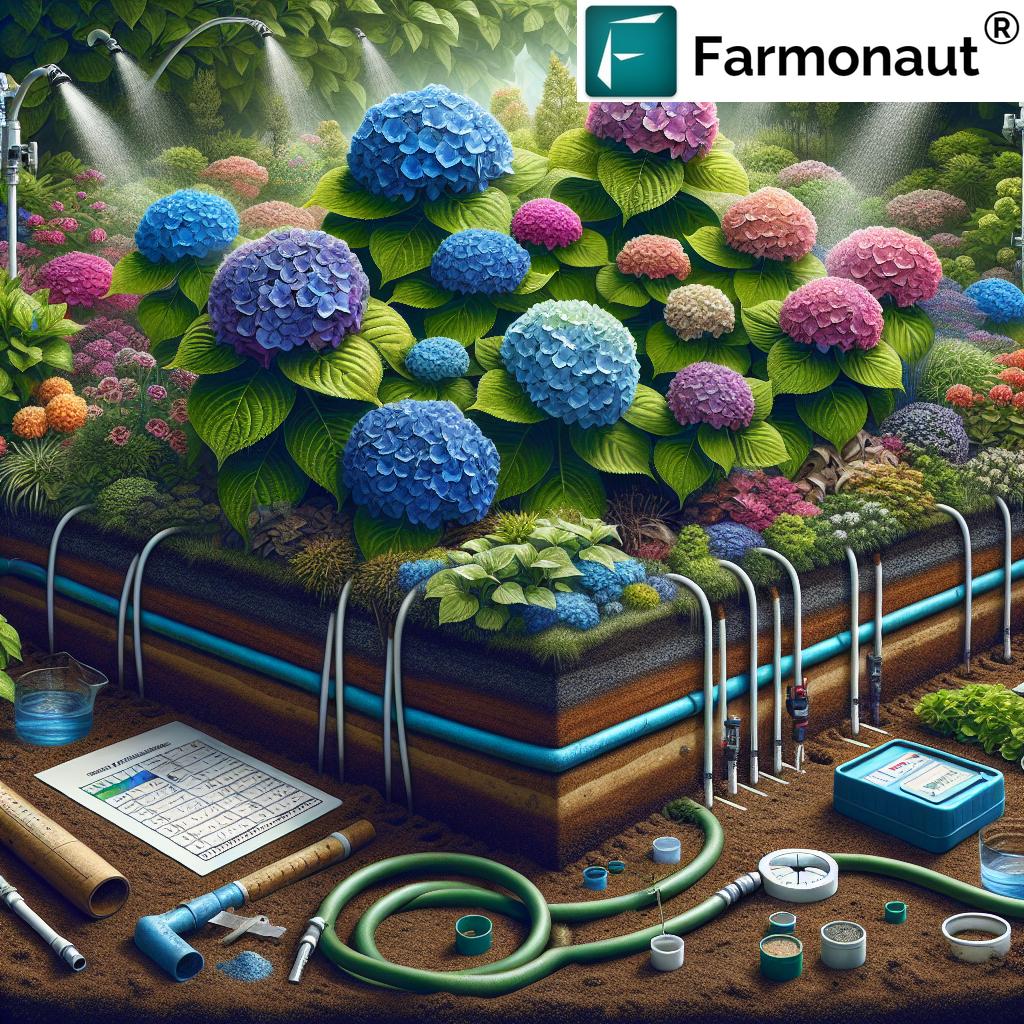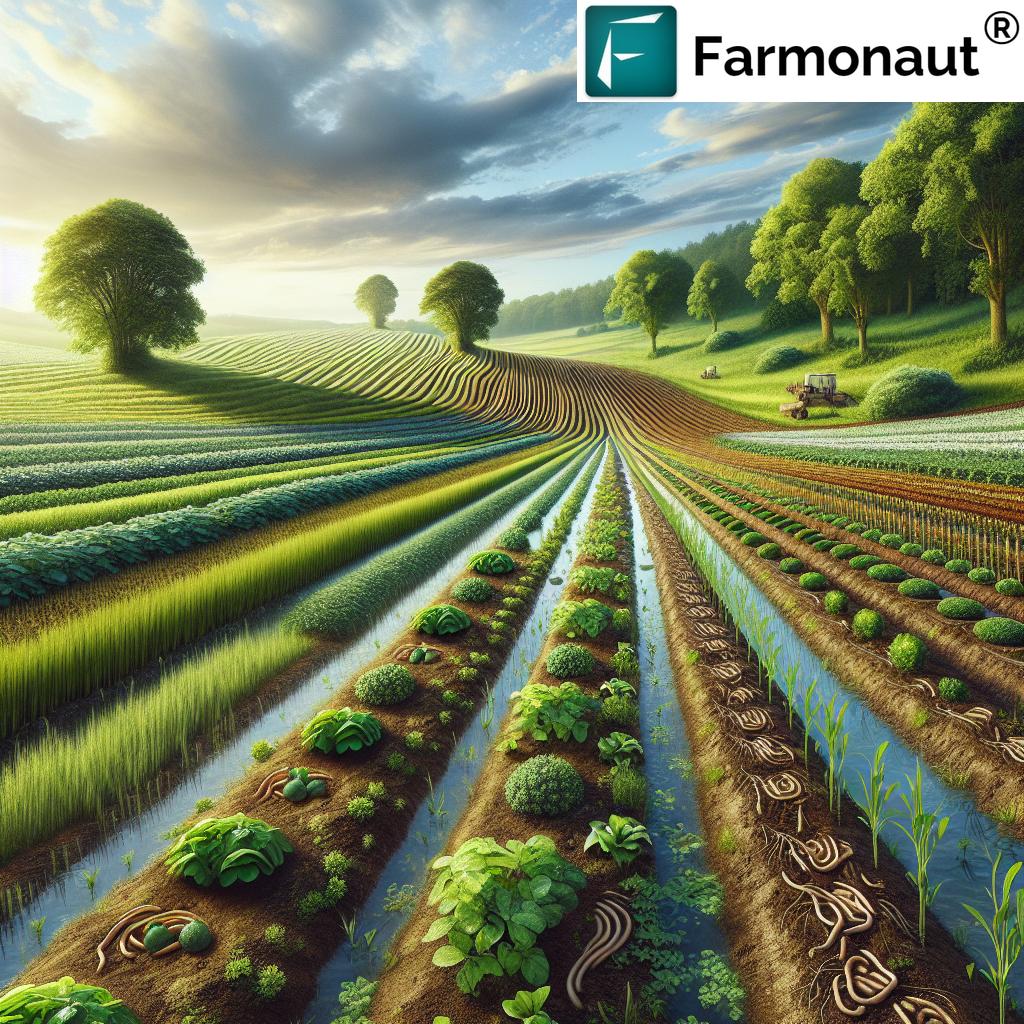Agrivoltaics 2025: Farming Revolution with Solar
“Agrivoltaics can increase land use efficiency by up to 70%, combining solar power and crops on the same field.”
Introduction: Revolutionizing Farming with Solar and Agriculture Integration
As the world grapples with increasingly severe climate change, resource scarcity, and the urgent need for a fundamental transition to renewable energy, a powerful new approach is transforming rural agriculture: agrivoltaics 2025. This vital innovation—the simultaneous use of land for both solar photovoltaic (PV) energy production and traditional crop farming—has emerged as a practical, sustainable path forward. By leveraging recent technological advancements in panels, monitoring systems, and AI-based management, agrivoltaics is poised in 2025 to radically transform our most traditional farming practices, enhance land-use efficiency, and significantly contribute to rural development.
In this blog, we dive deep into how agrivoltaics 2025 brings together food and energy, examines its integration into sustainable agriculture, and explores the benefits, challenges, and prospects for farmers, innovators, and technology leaders around the globe.
What is Agrivoltaics? Understanding Dual Land Use and Synergistic Yield
Agrivoltaics (sometimes referred to as agri-photovoltaics or agri-PV) involves installing solar panels above crops, allowing for dual land utilization: generating clean energy while maintaining or even improving agricultural yields. Rather than competing for the same limited land between energy and food production, agrivoltaics fosters a synergistic relationship, optimizing output per hectare through a simultaneous approach.
- Dual Use: Growing valuable crops directly beneath elevated solar panels.
- Solar PV Arrays: Advanced photovoltaic (PV) infrastructure is designed to permit sunlight passage and modulate shading to suit crop needs.
- Synergistic Production: Combining food and energy production in rural areas boosts farmers’ income stability, reduces environmental impact, and provides resilience against climate stresses.
The core concept of agrivoltaics is simple yet revolutionary: why dedicate scarce land to either crops or solar panels, when innovation allows us to efficiently do both—increasing output per hectare?
Agrivoltaics 2025: Technological Advancements Fueling the Farming Revolution
Recent technological advancements have made agrivoltaics in 2025 far more viable and scalable for both small-hold and large-scale farming operations. Below, we detail how innovation is optimizing the efficiency, integration, and productivity of modern rural agricultural systems.
Key Innovations in Agrivoltaic Systems
- Adjustable & Semi-Transparent Solar Panels: Advanced panels can modulate light, rotate, or tilt dynamically based on crop requirements and environmental conditions, balancing shading for optimal crop growth and solar energy capture.
- Lightweight, Bifacial Designs: Modern bifacial solar PV panels are capable of capturing sunlight from both sides, significantly increasing conversion efficiency and overall energy output per area.
- Internet of Things (IoT) & Sensors: IoT devices and AI-powered sensors provide real-time monitoring of microclimates beneath the arrays, aiding decisions on irrigation, harvesting, and crop selection.
- AI-Driven Management: Smart management systems leverage big data from field sensors to optimize yield, minimize resource use, and increase resilience to weather and climate shocks.
Optimizing Output: From Sunlight to Harvest
In 2025, agrivoltaics maximizes output per hectare by strategically adapting solar arrays to the needs of different crops and regional conditions:
- Leafy greens, berries, and shade-tolerant vegetables thrive under partial shading, often showing higher yields and quality compared to conventional open-field cultivation.
- Adjustable panels allow adaptation to different crop selection requirements, light levels, and climate zones, supporting food production in both arid and temperate regions.
- For arid and semi-arid regions, soil and water-use efficiency is improved, as solar panel shading reduces excessive heat stress and evaporation.
The result: farmers can produce more food and energy on the same land, meet renewable energy targets, and increase rural development, all while adapting to climate change and enhancing sustainability.
Benefits of Agrivoltaics in 2025: For Farming, Farmers, and the Environment
“By 2025, global agrivoltaic capacity is projected to reach 15 GW, revolutionizing the synergy between farming and solar energy.”
Key Benefits for Farmers and Rural Communities
- Stable Dual Revenue Streams: Farmers gain additional income by leasing land for solar arrays or selling renewable energy to the grid, buffering against market volatility and climate-related risks.
- Improved Crop Yields & Quality: Partial shading from panels reduces heat stress on sensitive crops—like leafy greens, berries, and vegetables—leading to higher or comparable yields even in harsh conditions.
- Boosted Land Use Efficiency: Agrivoltaics can increase land use efficiency by up to 70%, with optimal utilization of every hectare.
- Climate Resilience: Shading reduces water evaporation from soil (up to 40%), improving crop resilience during droughts or extreme heat events intensified by climate change.
- Physical Protection: Panels shield crops from hail, intense rains, and wind damage.
Environmental and Socioeconomic Impacts
- Significantly Reducing CO₂ Emissions: Agrivoltaics helps meet renewable energy goals in rural areas without invading forests or sensitive habitats.
- Biodiversity and Habitat Enhancement: The space beneath solar arrays supports pollinators and soil organisms, enhancing ecosystem health.
- Job Creation: Combines agricultural labor with emerging technical roles in solar, data analytics, and rural infrastructure.
- Resilient Rural Economies: Multiple revenue streams, technology skills, and enhanced productivity foster community stability.
How Technology & Innovation Are Reshaping Agrivoltaics 2025
In 2025 and beyond, technology and innovation drive agrivoltaics towards greater efficiency, scalability, and user adoption. Innovations like AI-powered analysis, satellite-based monitoring, precision agriculture systems, and the integration of IoT revolutionize farming practices and agricultural productivity.
Key Tech Trends in Agrivoltaics 2025
- AI & Machine Learning: Automated microclimate control and real-time recommendations for optimal irrigation, crop selection, and harvesting strategies enhance yields across varied conditions.
- IoT & Remote Sensors: Connected sensors stream continuous data on temperature, humidity, sunlight, soil moisture, and plant health—critical for both solar energy optimization and sustainable agriculture management.
- Satellite Technology: Satellite imagery empowers large-scale monitoring of crop vigor (using NDVI), soil health, and infrastructure integrity—essential for modern, scalable agrivoltaic systems.
- Blockchain for Traceability: Solutions that trace crop production and solar energy output—from farm to grid—ensure transparency, boost market trust, and help achieve carbon footprint goals. Learn more: Product Traceability for Agrivoltaics and Agriculture
Integration with Sustainable Rural Policies
Governments and institutions in 2025 are rapidly adapting regulation and infrastructure to support agrivoltaic systems in rural areas, as part of climate-smart agriculture and national clean energy transitions.
Farmonaut Solutions: Advanced Satellite & AI Monitoring for Agrivoltaics
As agrivoltaic adoption rises in 2025, satellite-driven insights, AI-advisory, and blockchain-based tools play a crucial role in maximizing productivity and environmental sustainability. We at Farmonaut, a leading satellite technology company, provide scalable and affordable solutions for modern agriculture and infrastructure teams looking to embrace agrivoltaic opportunities.
- Satellite Monitoring: Our platform delivers real-time satellite imagery and analysis of crop health (NDVI), microclimate shifts, and soil conditions for precision farm management around and beneath solar arrays.
- AI-Powered Advisory (Jeevn): Farmonaut‘s Jeevn AI provides actionable, location-specific agricultural advice, weather forecasts, and strategy recommendations—enabling maximum output with minimum risk.
- Blockchain Traceability: Enhance product traceability and transparency for both food and clean energy production through our integrated blockchain modules (see Product Traceability Page).
- Fleet & Resource Optimization: Farmonaut‘s Fleet Management solutions facilitate monitoring of vehicles and equipment used across large agro-solar fields, optimizing logistics and reducing operating costs.
- Environmental Impact Tracking: For compliance and sustainability goals, Carbon Footprinting modules enable rural businesses to monitor and report GHG emissions, supporting climate-positive transitions in the agrivoltaics revolution.
Want to integrate real-time satellite farm monitoring, AI-driven advisory, and data traceability for agrivoltaics in your operations? Explore our API platform and check Developer Documentation for seamless integration into your digital infrastructure.
Facing Challenges and Unlocking Future Prospects of Agrivoltaics 2025
Key Challenges Facing Widespread Adoption
- Initial Capital Costs: Installation of advanced solar arrays and field infrastructure requires significant upfront investment; financing options and innovative business models are crucial for rural farmers and cooperatives.
- Mechanized Farming Complexity: Mounted panels can interfere with some traditional mechanized farming operations, necessitating new equipment designs and field management strategies.
- Crop Selection and Adaptation: Not all crops thrive under partial shading—successful outcomes require careful selection of compatible crop varieties based on region, market, and agronomic factors.
- Regulatory Hurdles: Existing land lease policies and rural zoning often lag behind the agrivoltaic trend, requiring adaptive policy frameworks for balanced integration.
Overcoming these challenges in the next few years will depend on strategic investment, policy innovation, and advanced technology tools—such as those offered by precision satellite monitoring and AI-driven farm management solutions.
The Future of Agrivoltaics: Where Is The Innovation Heading?
- Hybrid System Designs: New configurations include vertical solar arrays co-located with climbing crops (e.g. trellised tomatoes), and integrated livestock grazing under panels—maximizing every square foot.
- AI & Data-Driven Precision: Increasing use of real-time weather, soil, and crop health data for proactive farm adjustments, resource allocation, and sustainable outputs.
- Scaling Up in Rural Regions: Widespread adoption across arid, semi-arid, and temperate regions accelerates as system costs drop and productivity benefits amplify.
- Holistic Sustainability: Enhanced focus on ecosystem services, biodiversity, and environmental impact as agrivoltaics moves to center stage in national and global food-energy-climate strategies.
Comparative Benefits Table: Traditional Farming vs Conventional Solar vs Agrivoltaics 2025
For large-scale farm operations and plantation forest management—especially where complex infrastructure and resource distribution are involved—digital solutions like Agro Admin App are invaluable. These tools help monitor crop plantation, forest advisories, harvest tracking, and microclimate management for the optimal productivity of dual-use lands.
Explore Affordable Satellite & AI Solutions for Agrivoltaics:
Frequently Asked Questions (FAQs) about Agrivoltaics 2025
What is agrivoltaics and how does it differ from standard solar or traditional farming?
Agrivoltaics is the simultaneous use of land for both agriculture (food production) and solar photovoltaic (PV) energy generation. Unlike conventional solar installations, which typically exclude farming, or traditional agriculture, which doesn’t integrate energy production, agrivoltaics allows both activities on the same land—enhancing land use efficiency and output.
Which crops are best suited for agrivoltaic systems in 2025?
The most suitable crops are those that benefit from partial shade, such as leafy greens (lettuce, spinach), certain berries, and shade-tolerant vegetables. Crop selection, however, should always be adapted to local conditions, markets, and system design.
How do solar panels in agrivoltaics affect crop yields?
For appropriately chosen crops, partial shading can reduce excessive heat stress and water loss, often resulting in stable or even increased yields in hot and arid climates. For shade-intolerant crops, system design and seasonal adjustments are essential.
Are agrivoltaics only suitable for large-scale rural farms?
No—agrivoltaic systems can be scaled for smallholders, cooperatives, or large plantations. Technological advancements such as lightweight panels and modular designs enable flexible deployment.
Can I monitor and manage my agrivoltaic operation remotely?
Yes. With solutions like Farmonaut’s satellite-based monitoring and AI-advisory systems, remote, real-time decision support for irrigation, crop health, and energy output is accessible via web, mobile app, and APIs.
How does agrivoltaics 2025 contribute to rural climate resilience?
By providing additional revenue streams, improving water-use efficiency, protecting crops from extreme weather, and cutting carbon emissions, agrivoltaics strengthens both ecological and economic resilience in rural regions.
What is the future outlook for agrivoltaics beyond 2025?
The future is promising, with large-scale adoption, continuously falling system costs, hybrid designs, and advanced AI/IoT integration leading to even higher productivity, sustainability, and resilience in the food-energy nexus.
Conclusion: Agrivoltaics 2025—A Cornerstone for Sustainable Farming & Renewable Energy Integration
As agrivoltaics 2025 continues to revolutionize sustainable agriculture and renewable energy, it fundamentally reshapes the future of farming. By uniting energy production and agriculture on the same rural land, farmers achieve higher yields, improved resilience, and reduced environmental footprint. With technological advancements in panels, data systems, and AI, as well as accessible, scalable platforms like Farmonaut, agrivoltaic systems offer practical, innovative solutions for food security and climate adaptation worldwide.
In 2025—and in the decades to come—agrivoltaics stands at the leading edge of the green revolution: transforming rural economies, empowering farmers, and significantly contributing to a sustainable, climate-smart future.
Interested in leveraging advanced satellite monitoring, AI advisory, and integrated traceability to future-proof your agrivoltaic operations? Explore the Farmonaut platform today and see how real-time intelligence can enhance the efficiency, resilience, and sustainability of your rural food and energy systems.












